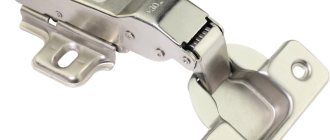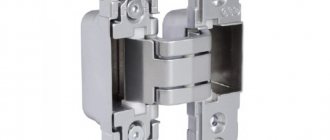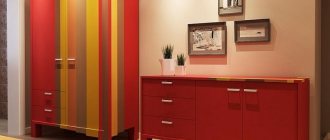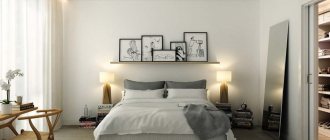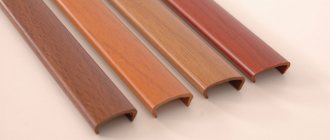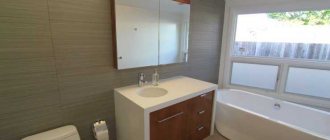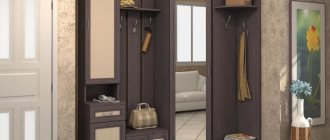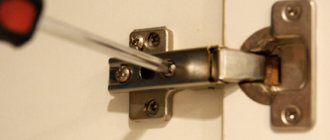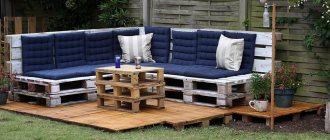Hettich concealed hinges, four main types
The German company Hettich produces four main types of hidden hinges, let's look at the advantages and features of each line.
The Hettich company produces hinges in the series:
Sensys (Sensis) - the main and most popular series of hinges from Hettich.
Almost all models in this series have door closers, but there are also models without a self-closing function. Such Sensis hinges without a damper are needed for specific cases. For example, if the door is heavy, or for some other reason a closer is not needed in the hinge. Sensys hinges without closers visually look exactly the same and cost about 25 rubles less per piece.
A hinge damper and a door closer mean the same thing, a self-closing function!
Intermat (Intermat) - this line of loops is much cheaper, in some models the difference is two times and can be approximately 200 rubles.
Intermat hinges come without closers, but you can install an additional damper on any of them. Sensys and Intermat hinges have the same mounting plate; both options are convenient because they can be quickly installed.
The hinges of these series come at different angles, there are many different types, from 15-20 options for each series. Slideon is the simplest and cheapest option among the Hettich door hinge lines.
These hinges are more difficult to install and require the use of a tool, primarily a screwdriver, to secure them. They do not have a self-closing function, that is, the presence of dampers, and this line has a small selection, only three options for loops of this line.
On average, each loop in this series costs approximately 70-80 rubles; see our website for more accurate and detailed prices.
Perfect (Perfect) - this series is intended for specific and rare cases and tasks.
For example, if you need to fasten a door at an angle of 90 degrees. These hinges are also suitable for cabinets with false panels, short consoles and for mounting under glass. This series is also produced without dampers.
The self-closing function is provided in hinges through a special mechanism called a damper or closer. Sensys series hinge it is built-in, but in the Intermat it is superimposed and can be placed on the hinge as an additional element.
The main differences between some types of hinges and others are different purposes, designs and additional functions.
In the shop-hettich online store you can always buy any type of hinge from Hettich from 4 production lines in any volume.
source
Effortless technique
Thanks to their shallow cup depth, Sensys hinges can be used everywhere, for example in thin doors or with large outer radii. At the same time, in keeping with the trend, the hinge ensures minimal visible reveals even with thick doors. Thanks to direct adjustment, the doors can be comfortably installed in depth. A special safety lock prevents inadvertent unscrewing of the overlay adjusting screw. Matching mounting plates allow eccentric height adjustment, which saves time. Thanks to their low design height, sensys hinges can be combined with internal drawers without any problems. The flat design of the hinge allows for narrow gaps between the side wall and the slide-out element.
Sensys is proven quality in accordance with all current regulations – for excellent damping effect, long service life and high strength. A high-quality product for the most stringent requirements that never ceases to amaze.
Installing hinges is knowledge that is not important to us.
Most furniture makers understand everything about the hinges: the hole for the cup is milled 22 mm from the end of the facade, the platform is attached 37 mm from the end of the side panel (Fig. 1). It is these dimensions that are duplicated on almost all templates.
But if you look at the technical manuals of branded hardware manufacturers, for example, Blum, Hettich, etc., you will find amazing and verbose instructions there on how to correctly calculate the installation of hinges. New terms appear there, such as fugue, overlap, distance.
Let's try to figure out what it is and why. For example, let's take Hettich loops (Fig. 2).
When opening the door shown in Fig. 2, its edge extends beyond the body to a distance F (Fig. 3). This is how loops are designed.
If, for example, wall 2 (an adjacent closet or other facade) is located close to sidewall 1, then the door will rest against this wall and will not open.
- Well, I discovered America! – the reader will exclaim, – Why are there gaps between the facades?
And yet, Blum, Hettich and others consider it necessary to warn us about this. Shown in Fig. 3 shift is called “ minimal fugue”
" It is clear that the door will open without problems if you initially move it in the opposite direction by a distance F (Fig. 4).
Adjacent doors (Fig. 4 B) need to be moved apart into a double reveal so that they do not run into each other if they are both opened at the same time. In the case of inset doors (Fig. 4 C), the interfering wall is the side of the cabinet itself.
The minimum reveal depends on the design of the hinge; in principle, it may differ among different manufacturers, that is, you need to look at the specifications. The reveal also depends on the thickness of the material (Table 1).
A quick glance at the presented meanings of the fugue is enough to understand that it has no special meaning.
In fact, what is 0.5 mm or 0.8 mm for the most common door thicknesses of 16 - 18 mm, if the gaps between the facades are usually at least 3 mm? It is worth considering the reveal for thicknesses of 22 mm or more.
In addition, adjusting the hinge allows you to move the door by ±2 mm, which is a multiple of the reveal.
Maybe the fugue value will allow us to calculate the distance to cup C? Also no, fugue, as can be seen from the table. 1 is the same for any distance.
In the end, nothing prevents you from hanging the door flush with the side, that is, with a reveal equal to zero, if it is a free-standing cabinet.
Is it possible to move the door more than the minimum opening? Easily. This usually happens, with gaps of 3 mm between the facades, the facades are shifted from the contour of the body by no less than 1.5 mm.
So why is she there at all? Well, for general development. True, Hettich claims that the fugue is needed when calculating distance. Okay, we'll deal with this in the next article.
source
Adjustment in planes
Vertical adjustment
Vertical adjustment of cabinet hinges is the action with which you should begin adjusting furniture fittings. This adjustment is necessary if the door hangs crookedly - it sticks out from the general contour of the furniture, or if there are two doors, one is located higher than the other.
Vertical adjustment of the facade is carried out in 4 successive steps:
- Open the furniture door and look for the hinges. If there are plugs on them, remove them.
- On both hinges, tighten the bolts located closer to the edge of the sidewall. They are responsible for the vertical position of the furniture facade. Both bolts should initially be set to the same value in order to know where to adjust next.
- Close the front door and look at its location in space relative to the overall dimensions of the cabinet. If the upper corner is tilted to the right, it is necessary to tighten the adjustment bolt on the upper hinge more strongly, while on the lower one it must be unscrewed.
- Repeat steps 2-3 until you achieve the optimal position of the facade.
Adjusting the vertical clearance
At this point, the vertical adjustment of the hinges on the cabinet doors is completed, you can proceed to the next stage - adjusting the height of the furniture facade.
Adjusting the door height
To adjust the height of the doors, two screws are installed on two oblong-shaped “ears” - the hinge itself is pulled through them.
Height adjustment is made with two screws
The setup is done in 3 steps:
- Loosen the adjusting screws on all installed hinges.
- Raise or lower (depending on what is necessary) the facade, and then fix it.
- Tighten the screws at low speeds almost all the way, without stripping the threads.
After adjusting the facade in height, you can begin adjusting the doors along the plane.
Adjusting the height of the façade
Before adjusting the height of the cabinet hinges, it is advisable to select self-tapping screws with a fine thread pitch - they provide more precise adjustment of the position of the facade.
Adjusting hinges according to plane
Adjustable furniture hinges allow you to change the position of the facade in the plane - this is useful if either there is poor pressing of the door to the furniture body, or when pressed, the door seems to bounce in the direction opposite to the pressure.
If such a situation arises, just turn the second adjusting bolt located on the hinge. First, tighten the bolts towards you (2-3 mm is enough), then check for a gap between the facade or doors and, if necessary, make further adjustments.
Adjusting door leaves according to plane
Do not be afraid to tightly tighten the bolt that regulates the position of the facade in the plane. It is on it that most of the weight of the structure is supported, and it itself is fixing. Use a Phillips screwdriver to tighten, being careful not to damage the threads.
Furniture hinges with a closer: operating principle, how to install and adjust
Good day to all! It's time to talk about furniture hinges with door closers. This is an extremely interesting and very useful piece of equipment.
It has its own characteristics and a number of undeniable advantages. Among the key advantages, I would note versatility and multifunctionality.
But so that the installation of these components for facades does not disappoint you, I propose to discuss in detail door hinges equipped with a closer mechanism. We will talk about their operating principle, installation features, types, and why adjustment is needed and how you can do it yourself.
Currently, purchasing such devices is not difficult. Not long ago I had the opportunity to buy a set of hinges in St. Petersburg myself, but cities such as Voronezh, Moscow, Yekaterinburg, Minsk (Belarus) and Kyiv (Ukraine) offer an assortment no worse than St. Petersburg. The only question is what exactly you will buy and how competently you will use the capabilities of the accessories. And sometimes it happens that people complain that the loop is not working and urgent repairs are required due to their poor quality. But that's not always the case. Sometimes the master himself is to blame.
Scope of application
The design of almost any item, including lids or doors, also contains hinges. The shock absorber and door closer in this device are not mandatory, but desirable elements, although they are often used separately:
- In wardrobes where hinges are not needed, but a closer is useful.
- In shelves and drawers that open upward, where the closers (aka shock absorbers) are usually more massive, and the hinges are standard.
- In display cases and other glass furniture, where recessed hinges are not used.
You can often find interior items with doors made of glass, which is enclosed in a wooden or metal frame. Such a frame, especially one made of wood, is quite suitable for cutting the installation cup of the hinge into it.
Most other products need hinges with a closing device, for example, children's wardrobes or desks, the doors of which fall off due to careless use. Also included in this category are office and commercial furniture and kitchen sets.
Advantages of birch furniture panels, scope of application
Sliding wardrobe with lighting: modern ideas on how to connect it yourself
The key difference between this hardware and its analogues is considered to be silent and smooth operation. This follows from the operating principle and design of the mechanism. There is an additional device inside it. It is also a shock absorber or a special closer. Due to this design, the doors on the furniture façade close neatly and there is no characteristic bang or impact.
There is a spring inside the housing. And this spring has the appropriate filling. Depending on it, the mechanism can be gas, oil or viscous silicone medium.
Based on the peculiarities of the application of this fittings, such hinges are structurally:
They are successfully used for standard and corner cabinets. The same 45-degree corner hinges are great for organizing kitchen furniture and are used for corner cabinets.
The fittings are capable of opening doors at different angles, including 180 degrees and a full 270 degrees. Here a lot depends on the design of the furniture itself and the need to open the cabinets wide.
The operating principle itself is based on the following. The spring is covered with a special liquid, which, when closed, gradually flows into the sleeve located in the capsule of the closer itself. Due to narrowing or expansion (opening and closing), the outflow of fluid provokes the movement of the piston. The valve adjustment determines how quickly the door closes completely.
Advantages
When planning to use such hinges for a false panel or for a kitchen, you are making the right decision. It's easy to explain. By purchasing products from brands like JET or GTV, you get a number of objective advantages. Namely:
Wall-mounted coat hooks for the hallway: which ones are better to choose?
- smooth and silent closing of doors;
- long service life;
- ability to withstand loads;
- high-quality fastening on the facade;
- work even with heavy doors;
- possibility of regulation;
- a wide range of;
- availability of excellent manufacturers on the market;
- protection against leakage of oils and working fluids.
By adjusting the operation of the closer valve, you can speed up or slow down the process of opening and closing furniture doors. By applying a slight force, the sash will close itself using its own weight.
Construction and materials
In the manufacture of this type of fittings, materials based mainly on cold-rolled steel are used. Some hinges with a closer function additionally have a lock. To accomplish this, alloys of copper, zinc and aluminum are used.
It is also important to create an anti-corrosion coating so that the fittings do not rust under the influence of moisture and other aggressive environments. The most relevant solution is brass plating.
There is also a decorative coating, for which different enamels and imitation of bronze, chrome, nickel or gold are used.
Structurally, refined hinges include:
- installation site;
- strike plate;
- cup;
- spring mechanisms;
- overlays;
- movable types of hinges;
- built-in dampers;
- shock absorber
Based on their purpose, hinges are made from different materials and with different designs or structures. For example, if special hinges with finishing are used for glass doors, there is no bowl.
Features of fittings
The only purpose of any door closer is to automatically close the doors. It is easy enough to push the sash equipped with it, and it will close itself. In this case, only hinges equipped with a shock absorber operate smoothly. Despite the differences, the design of almost all hinges for frame furniture is the same. The fittings consist of the following elements:
- an installation platform with mounting holes, which is located on the wall of the housing;
- counter platform - a cup installed on the facade from the inside (recessed or overhead);
- a hinge connecting parts of the device;
- door closer (optional);
- shock absorber (optional);
- adjusting elements: strips, pins, fixed with special screws.
The operating principle of this fitting is quite simple, so furniture hinges with a spring closer are not uncommon. In terms of reliability, aesthetics and ease of use, different models differ significantly. Using high-quality hinges with a closer provides the following advantages:
- semi-automatic, pleasant-feeling door closing;
- absence of irritating pops and blows;
- increasing the service life of the facade and body;
- simplified adjustment of the door position, adjustment of the speed of operation of the closer;
- significant service life of the loop;
- an opportunity to demonstrate the status and taste of the owner of the house.
Shock absorbers can be built-in or overhead, which are installed separately. The principle of their operation is identical to the operation of an automobile unit. One of the two communicating chambers is filled with oil or gas. When the door is opened (closed), the working medium in the closer flows through a narrow channel into the second chamber. Since the speed of its movement is limited, the door cannot slam shut sharply.
Types of height-adjustable furniture legs, installation rules
Leading manufacturers
If you have experience purchasing and installing hinges with special closers from different manufacturers, including those mentioned in this article, be sure to leave feedback. It will be interesting to find out whether these brands are really that good, or whether they also have their drawbacks.
To choose hinges with a closer function, you need to decide the purpose of their use. After all, there are different overlaps, sizes and corresponding configurations. The standard is the popular overhead type hinge with 4 hinges, the mounting holes of which fit a 35 mm bowl. Such hinges are universal and are actively used in the production of all kinds of furniture.
As for filling, gas will be the cheapest option, and silicone and oil fillers are the leaders in terms of reliability.
The following companies are currently considered leading brands:
- Boyard. She's just Boyard. Domestic accessories of high quality with a huge range and reasonable prices. A simple secret to success;
- GTV. Very durable, move smoothly and blend perfectly with different furniture. Adjustment and installation are extremely simple;
How to choose
The furniture fittings market offers a wide range of hinges of various types of application, configuration and size. Hinges with a four-hinged overhead type closer with an installation hole for a 35 mm bowl are considered standard. These are universal hinges used for the production of cabinet furniture. When choosing accessories, take into account the quality of the products and the filling of the closer (gas is more economical, oil and silicone liquid are more reliable). Among the world's manufacturers of hinges, the recognized leaders are:
- Blum - characterized by three-dimensional adjustment of the facade in plane and space, equipped with a short mounting strip to simplify installation;
- Hettich - high quality materials and assembly of hinges and damper mechanisms. They are characterized by a long service life, durability and reliable fixation;
- GTV - the manufacturer's hinges show good results in terms of durability and smooth movement of façade elements. Do not require complex installation and adjustment;
- Boyard - products of a domestic manufacturer have conquered the market thanks to the high quality of hinges with closing, a wide range of fittings and the affordability of products.
If the manufacturer is not indicated on the product, you should not rely on the quality and reliability of such hinges. An important indicator is the parameter declared by the manufacturer - the number of closing/opening cycles of the valves. The optimal value is 60,000-200,000 times. The owner of the furniture can confidently open and close doors hung on hinges with a lock every day, the spring mechanism will not fail.
How to properly embed a sink into a countertop with your own hands: step by step with photos
If, when purchasing fittings with a door closer, you do not see who exactly made it, I recommend abandoning such hinges. Go to the same Leroy Merlin. Good selection and always available hinges from leading manufacturers.
Also look at the number of cycles that the manufacturer guarantees. It’s good if this parameter is in the range from 60 to 200 thousand.
Installation
To install hinges with a closer, the insertion method is used. To work you will need a drill, a screwdriver (preferably a screwdriver), a milling cutter and a ruler with a pencil.
If the door is small and light weight, you can limit yourself to one hinge. But it’s better when paired elements are mounted.
The work is performed in the following sequence:
- Markings are made on the door for fitting installation points;
- If you plan to install 3 hinges, one must be placed strictly and evenly between two elements (top and bottom);
- Hinges cannot be installed in the area where the fittings will join drawers or shelves;
- The overlay elements should be attached to the facade and the bowl body should be outlined;
- A special hole is made in the circled area using a milling cutter;
- Next, holes for the screws are drilled;
- The strip is mounted and the fittings are installed on the screws;
- The special hinge platform is mounted on the body of the furniture itself;
- The position of the curtain wall is adjusted using the central screw.
Regardless of the angle of rotation, there are no significant differences in the installation of fittings.
A little practice and watching a visual video will allow you to quickly master the technique of installing hinges with a closer.
Adjustment
When installation is completed, the structure should be adjusted in vertical and horizontal planes. Due to this, the facade will fit more tightly, become even and allow the doors to open and close perfectly smoothly. Still, the presence of different gaps between furniture parts causes some irritation. Do you have it too?
As for adjustment, several rules and recommendations are followed:
- first you need to adjust the gaps in the vertical plane, and then in the horizontal;
Nuances of adjustment
After attaching the hinge with the closer to the facade and body of the furniture, the mechanism must be adjusted relative to the horizontal and vertical plane. The adjustment helps to fit the façade more tightly or loosen it to give the finished structure an attractive appearance and to obtain equal gaps between the parts. Subtleties of adjusting hinges with a damper:
- Initially adjust the gap vertically, then vertically. You should check the position of the furniture level in different planes, and if necessary, adjust the legs. If the floors are uneven and the furniture cannot be perfectly leveled, adjustment allows you to correct the gap;
- It is convenient to adjust the hinges with a Phillips screwdriver. There are two screws on the furniture body. The screw closest to the edge turns the sash to the right and left. Adjust the upper and lower loops until the desired result is obtained. Each screw is responsible for a diagonally opposite corner of the facade;
- To level the door height, adjust the fastening screws on the furniture body. They need to be loosened (with a screwdriver or screwdriver), the façade should be set to the required height, and the screws should be secured. When working with a screwdriver, rotate the attachment at low speeds - pinching the self-tapping screw violates the strength of the door;
- adjustment along the plane is necessary to prevent the formation of a gap between the door leaves and the body - the facade does not fit tightly to the furniture. To adjust, tighten the second bolt. If the upper edge of the facade does not fit, adjust the second bolt of the lower hinge; if there is no plane at the bottom, adjust the upper hinge.
Hinges with closers allow three-dimensional adjustment of facades - horizontal, vertical, frontal plane. By adjusting, you can hide uneven floors and walls - visually the façade on a table or wall cabinet will look perfectly smooth.
Hardware fittings are popular in the furniture industry because they have high quality workmanship, a long service life, and prevent mechanical damage to facades.
Modern double beds with upholstered headboards: which one to choose
The presence of a closer allows for the most precise adjustment. It is performed in the vertical, frontal and horizontal plane.
Moreover, such hinges save even in situations where the floor itself is uneven. By adjusting, it is possible to compensate for this shortcoming, and as a result, the furniture with doors still looks perfectly level.
What can you say about such hinges with a closer? Share your impressions in the comments.
Thanks to everyone who is with us! Don't forget to subscribe and invite your friends to join us!
source
What are they suitable for?
Hinges with closers are widely used in the manufacture of cabinet furniture for household, office and commercial purposes. Thanks to the self-closing mechanism, it is possible to avoid damage to the facades, which is especially important when furniture is used frequently. Hinges with clinches are used in the manufacture of the following furniture structures:
- bedroom sets - wardrobes, fronts of dressing tables and chests of drawers. Sliding systems with closers are used for sliding wardrobes and dressing rooms, and meta boxes for drawers;
- kitchen units - wall cabinets and tables. Using hinges, it is convenient to close the upper and lower cabinets of furniture with virtually no effort;
- furniture for children's rooms and living rooms, desks for schoolchildren. To prevent a child from slamming doors when using furniture frequently, it is worth equipping cabinets and tables with closers;
- office furniture - computer desks, shelves with doors for storing papers and documents. Company employees use furniture every day; it is important that it closes smoothly;
- trade groups – glass showcases. To display goods under glass for commercial purposes, cabinets with glass display cases are installed. Furniture hinges are installed on an aluminum profile frame.
If you install a hinge with a closer directly on the glass sheet with preliminary drilling, the fragile material may not withstand frequent use. By enclosing the glass in a metal frame, the installation of the hinge will be more reliable.
Furniture hinges with a closer: varieties, installation nuances
Furniture hinges with a closer are expensive fittings with a complex design. Thanks to the shock absorber built into the hinges, the doors will close independently. The closer ensures tight fixation of the sashes, and smooth closing reduces the likelihood of mechanical damage. Hinges can be different, each type has characteristic features that are important to consider before purchasing accessories.
Furniture hinges with closer
